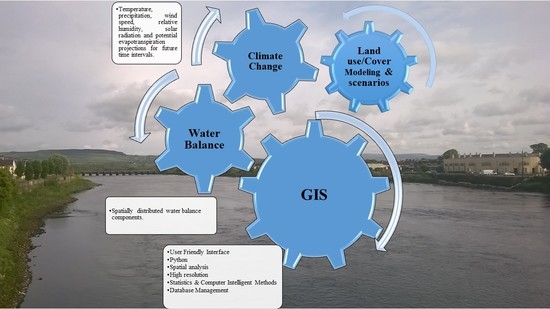GEO-CWB: GIS-Based Algorithms for Parametrising the Responses of Catchment Dynamic Water Balance Regarding Climate and Land Use Changes
Abstract
Share and Cite
Gharbia, S.S.; Gill, L.; Johnston, P.; Pilla, F. GEO-CWB: GIS-Based Algorithms for Parametrising the Responses of Catchment Dynamic Water Balance Regarding Climate and Land Use Changes. Hydrology 2020, 7, 39. https://doi.org/10.3390/hydrology7030039
Gharbia SS, Gill L, Johnston P, Pilla F. GEO-CWB: GIS-Based Algorithms for Parametrising the Responses of Catchment Dynamic Water Balance Regarding Climate and Land Use Changes. Hydrology. 2020; 7(3):39. https://doi.org/10.3390/hydrology7030039
Chicago/Turabian StyleGharbia, Salem S., Laurence Gill, Paul Johnston, and Francesco Pilla. 2020. "GEO-CWB: GIS-Based Algorithms for Parametrising the Responses of Catchment Dynamic Water Balance Regarding Climate and Land Use Changes" Hydrology 7, no. 3: 39. https://doi.org/10.3390/hydrology7030039
APA StyleGharbia, S. S., Gill, L., Johnston, P., & Pilla, F. (2020). GEO-CWB: GIS-Based Algorithms for Parametrising the Responses of Catchment Dynamic Water Balance Regarding Climate and Land Use Changes. Hydrology, 7(3), 39. https://doi.org/10.3390/hydrology7030039








